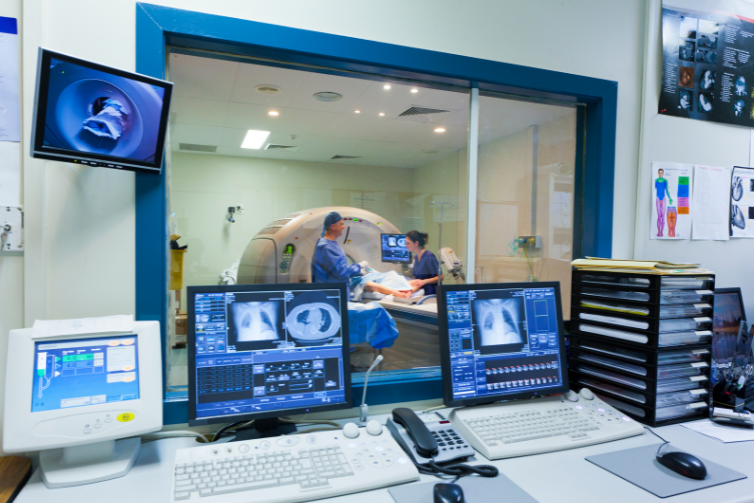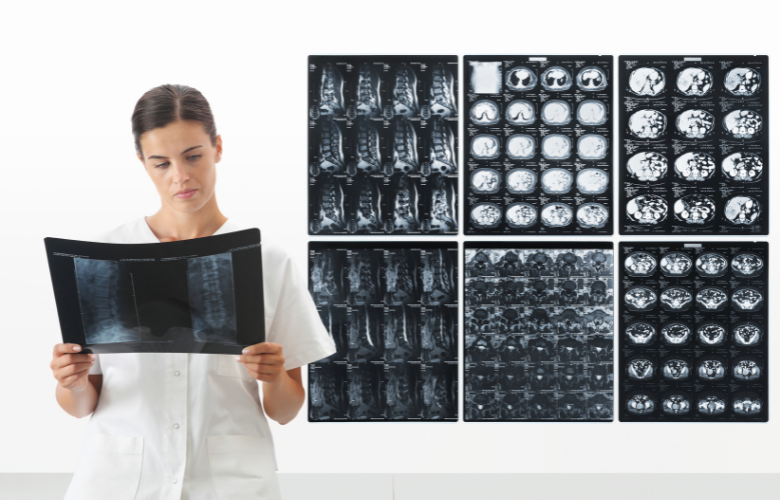
Unifying Access to Medical Imaging
Medical imaging provides a crucial role in both diagnosing and preventing a multitude of health conditions. However, medical imaging must overcome the challenge of providers and patients being unable to access the images or technology. For instance, two-thirds of the world’s population lacks access to medical imaging [1]. This is concerning because often medical images allow providers to make diagnostics in a timely manner and determine the best course of action. Furthermore, women are more likely to die of breast cancer when they receive a late diagnosis [1]. Therefore, removing health disparities is important so more patients can access diagnostic imaging. One way to do this is to implement AI so that technology will be more efficient, cost-effective, and accessible. Furthermore, providers need to work to educate patients on screenings based on their age, gender, and genetics. Overall, much work is needed to increase accessibility to medical imaging tools.

Additionally, more work is needed to improve access to a patient’s medical records, specifically their imaging records. Furthermore, the increasing amount of data makes it more time-consuming for providers to know which data is meaningful to the current situation being treated [2]. The format that medical imaging is stored in may also make it difficult to share [2]. Another challenge is the financial burden that comes with non-compliance and regulatory requirements [2]. However, the benefits of improved diagnosis and lower provider burnout make increasing interoperability in the medical imaging field worth it [2]. Therefore, health IT companies need to focus on improving access to different imaging systems so patients can have the best care.
Creating a Unified Veterans Medical Imaging Database
The Department of Veterans Affairs has already been working on ways to implement AI in medical imaging [3]. A new pilot technology uses AI to alert radiologists to the serious cases that need to be addressed first [3]. Furthermore, the pilot program promotes quality assurance and provides feedback in real time during the screening process [3]. Furthermore, another goal is to improve how the Veterans Integrated Service Networks (VISNs) are all connected. For instance, each of the VISNs has its own communication and imaging system which often uses different vendors [3]. This makes it hard to share information across various systems. Therefore, technology is being developed to connect these systems successfully so a national database is created [3]. Overall, the goal of the AI pilots is to improve the standardization of care across the VA [3].

Benefits of AI in Medical Imaging
AI is an effective tool for improving standardization across care through data sharing. First, AI prioritizes patient safety by promoting privacy [4]. For instance, AI can monitor patient data to alert if confidentiality is broken and encrypt data in motion. This will make transferring data across various systems more secure and should reduce financial burdens from failure to meet privacy regulations. Additionally, AI is able to decipher large amounts of unstructured data into meaningful information for providers to use. AI can also automate data collection from patients. For instance, AI has been effective at analyzing patients’ dietary habits [4]. This is useful for patients with chronic conditions who need to monitor their daily nutritional intake. Overall, AI promotes secure, effective, and meaningful data sharing among various systems. Therefore, AI is crucial in medical imaging which contains a multitude of unstructured data that can be difficult to share across platforms.

HITS
HITS’ agency culture and mission facilitate customer/human-centered design. We tailor software and project management support products to meet our customer’s needs. Furthermore, HITS puts the “soft” in “software” development. We analyze functional requirements to ensure all needs are properly adjudicated to be included in the software. This allows clients and customers to have peace of mind that their needs are heard and acted upon. HITS also makes sure that all medical and appropriate representatives (either medical, technical, supportive, and/or administrative) are present during the High-Performance Team creation as a wide range of expertise is needed to develop the Capability Development Documents. Finally, HITS expects all staff to incorporate customer experience-related best practices and offers incentives for excellent customer experience performance and team collaboration.
References
- https://www.gehealthcare.com/insights/article/improving-access-to-medical-imaging-for-more-patients
- https://www.ironbridgecorp.com/blog/interoperability-in-healthcare-the-future-of-medical-image-exchange-capabilities
- https://federalnewsnetwork.com/artificial-intelligence/2023/01/va-embraces-ai-to-improve-radiology-screening/?readmore=1
- https://www.weforum.org/agenda/2023/06/emerging-tech-like-ai-are-poised-to-make-healthcare-more-accurate-accessible-and-sustainable/